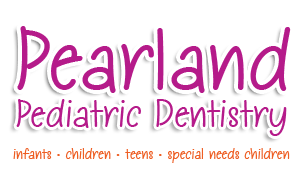March 24th, 2021

Although using mouthwash is certainly not the equal of brushing and flossing, it does have benefits for your dental hygiene. If you use mouthwash regularly, you should find out which type is best suited for your needs. Here are some things to think about the next time you’re at the store.
The first item to weigh is why you want to use mouthwash. If the reason involves a high risk for cavities, you should focus on a mouthwash that contains fluoride. Make sure to double-check the label, because some mouthwashes do not necessarily include fluoride.
If you’re looking for a mouthwash to fight gingivitis, select an oral rinse with antibacterial properties. Make sure to read labels and avoid picking one that contains alcohol. Antibacterial mouthwash would also be best for a patient who has periodontal disease.
Another option is prescription mouthwash. These should be discussed with Dr. Pamela Clark and/or your pharmacist in order to avoid negative side effects. Pay close attention to the directions regarding how much to use and for how long. Keep in mind that some brands may lose their effectiveness if you use them on an ongoing basis.
For children, you can find a mouthwash that changes the color of plaque on their teeth. This is a fun way to help them understand how well they are brushing, and what areas they need to focus on. It can even be a tool for adults who have trouble reaching certain areas of their mouth.
While mouthwash is generally considered as a safe means to improve your oral health, you need to keep certain things in mind. Avoid using any mouthwash that has alcohol in it. If you are using a strong one, it can reduce your sense of taste over time. Be wary of a mouthwash that claims it can loosen plaque; this is not accurate and can mislead consumers.
We hope these simple suggestions will help you the next time you’re at the store. Make sure you pick the right mouthwash to keep that healthy smile! Feel free to contact Dr. Pamela Clark at our Pearland, TX with any questions you may have.
March 17th, 2021

A study conducted in Washington State in 2004 and another conducted in Madrid, Spain in 2012 both reported findings that support a direct relationship between parents’ dental fear and their child’s fear of the dentist.
The Washington study examined dental fear among 421 children ages 0.8 to 12.8 years old. They were patients at 21 different private pediatric dental practices in western Washington state. The Spanish study observed 183 children between the ages of seven and 12 as well as their parents.
The Washington study used responses from both parents and the Dental Sub-scale of the Child Fear Survey Schedule. The survey consisted of 15 questions, which invited answers based on the child’s level of fear. The scale was one to five: one meant the child wasn’t afraid at all, and five indicated he or she was terrified. The maximum possible points (based on the greatest fear) was 75.
Spanish researchers found a direct connection between parental dental fear levels and those among their kids. The most important new discovery from the Madrid study was that the greater the fear a father had of going to the dentist, the higher the level of fear among the other family members.
Parents, but especially fathers, who feared dental procedures appeared to pass those fears along to every member of the family. Parents can still have some control over fear levels in their children. It is best not to express your own concerns in front of kids; instead, explain why going to the dentist is important.
Dr. Pamela Clark and our team work hard to make your child’s visit at our Pearland, TX office as comfortable as possible. We understand some patients may be more fearful than others, and will do our best to help ease your child’s anxiety.
March 10th, 2021

Sealants offer many benefits, but the best is their ability to protect your molars. Molars are full of small caverns that can be the perfect breeding ground for tooth decay and plaque buildup.
Use of protective sealants prevents this buildup from happening. Although children often receive sealants for routine preventive care, they aren’t the only ones who can benefit from this treatment. Sealants can also help adults who have deep canyons or grooves in their teeth.
They are commonly placed on the rear molars that tend to suffer the most decay. Because your molars are used substantially as grinding surfaces, food is more likely to be trapped among them.
Sealant solution consists a composite material that contains bonding agents that seal the top of your teeth. The process is quick and painless, which makes it a great solution for both children and adults who have had trouble with cavities and tooth decay. Sealants also last for several years, and repair is a simple process that can be completed by Dr. Pamela Clark.
The process of putting sealants on teeth starts with the tooth getting cleaned. We clean it with a type of baking soda spray called sodium bicarbonate. Then acid is etched onto the teeth to rough up the surface.
We apply an alcohol-based liquid to dry the area where the sealant is supposed to go. After it completely covers the surface of the treated teeth, the sealant is cured with a light that makes it hard and long-lasting.
Getting sealants can prevent the possible restorative costs that come from cavities. Sealants help to protect your tooth’s enamel from harmful acids and prevent decay, which can be an investment in itself. The whole process is quick, so it should be easy to schedule an appointment at Pearland Pediatric Dentistry.
Feel free to call our Pearland, TX location and we can answer any questions you have about this service.
February 24th, 2021

Did you know that the most common oral health diseases are tooth decay and gum disease? Not so coincidentally, they are also the easiest to prevent. As much as we would like for the brushing and flossing to do all the work for us, in reality, we really are what we eat — and a healthy diet is just as important for dental health as it is for the rest of the body.
Eating well boosts your immune system, and makes you less susceptible to gum disease and tooth decay. When you maintain a balanced diet, you provide your body with all the nutrients it needs to succeed. So what does a healthy, balanced diet entail? It’s really quite simple. Here are some tips:
- Focus on lean meats, veggies, whole grains, and healthy fats.
- Limit your intake of sugary drinks like energy drinks and soda.
- Keep your sweet tooth in check.
- Beware of acidic meals and snacks that are high in salt and sodium.
- Drink lots of water.
Unfortunately, there’s no “one size fits all,” magic diet that will automatically improve your oral health, but following the five guidelines above as best you can is a great way to start. Food and drinks that are high in sugar or acidity weaken your enamel, stain your teeth, and make you more likely to develop a cavity or gum disease.
At Pearland Pediatric Dentistry, we like to encourage our patients to drink a lot of water during the day. Doing so not only keeps you hydrated, but also helps rinse out the sugar and acid from various things you’ve consumed during the day.
If you think your diet might be affecting your smile, come pay Dr. Pamela Clark a visit or give our Pearland, TX office a call! We’re always happy to answer your questions.








